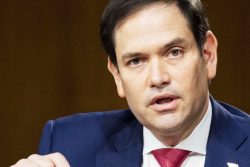Over the years the response of the Guyana Civil Defence Commission (CDC) to various local emergencies, mostly to do with flooding in riverain areas, has not always been sufficiently sophisticated, nor always timely and effective. Guyana’s low-lying coastland is especially prone to flooding, and the city of Georgetown, the Mahaica, Mahaicony, Abary (MMA) on the East Coast of Demerara, and areas on the West Bank of the Berbice River, all almost routinely experience varying degrees of flooding. But even in interior locations such as in the North West District flooding is a strain on the resources of residents, farmers and businesses.
The remit of the CDC involves appropriate responses to natural disasters, including providing disaster relief to affected persons. The CDC collaborates and works with various state agencies and private sector organisations to ameliorate the suffering of those seriously affected. However, the issues of the CDC’s preparedness and response efficiency and effectiveness to recurring disasters in Guyana, particularly flooding have always detracted from their well-meaning responses to various disasters around the country.
We have been critical of the CDC in these very columns in relation to their response to assisting Guyanese in the Caribbean islands who were affected by the massive hurricanes in 2017 which devastated several islands and left many homeless. Guyana’s response to helping its affected citizens was tentative, uncertain, and not properly communicated during a time of downed telephone lines and no internet. Boots on the ground were slow in arriving, and to date, we are uncertain of the full effectiveness of the whole exercise. Analysing feedback in a detailed manner would provide information on what went wrong and what could be improved the next time, and sharing of that analysis with the media would be a boon to those who still reside in areas prone to such storms, as they will be better apprised of what to expect in the future.
Instead, the CDC honoured 88 private and public-sector agencies just this July for their part in boosting Guyana’s hurricane relief response to the affected islands and Guyanese citizens. While this acknowledgement is laudable, a detailed analysis of the negatives and shortfalls in the relief effort is far more useful than simply celebrating the positives because of the nature of the purpose of the organization. It is hoped that this analysis is happening even if “behind the scenes,” and that the results will be shared with all stakeholders and the media for dissemination to the public.
Nevertheless, we have seen encouraging signs from the CDC that suggests that the entity is working assiduously to boost its capabilities in disaster response and risk management. In April 2018, the Caribbean Disaster Emergency Management Agency (CDEMA) reported that 45 persons from Pomeroon-Supenaan in Region 2 were trained in “Initial Damage Assessment” by the United States Agency for International Development’s Office of U.S. Foreign Disaster Assistance (USAID/OFDA).
But in June this year the CDC was thrown into action due to severe flooding in Lethem in which hundreds were affected and dozens of residents were required to be evacuated to shelters, with supplies being flown in via the Guyana Defence Force’s lone Skyvan to provide for those affected. And again, in June, the CDC’s capabilities were put to a test in a rather unexpected manner when a natural gas leak erupted by way of a well dug in a yard in Diamond, EBD. Officials from ExxonMobil were called in to consult on the remedy and to date we are uncertain that the well has been fully capped and the gas leak contained.
This experience of the natural gas eruption does indeed point to the fact that our state agencies responsible for disaster management and disaster response still have a far way to go in garnering the resources, including equipment, machinery, technological know-how, and capacity to effectively respond to the myriad forms of disaster that have been plaguing Guyana, also including new forms of disasters potential and otherwise that are being indicated. While our pundits question ExxonMobil on their ability to handle (major) oil spills we are not yet showing the capability of properly managing recurring flooding in our city, towns, agricultural regions, and interior locations.
Our CDC must be able to produce risk assessments directed at the appropriate state agencies which must then take effective corrective action, rather than do nothing and watch the same tragedies happen year after year after year. There seems to be much resistance in Guyana to the plans and strategies being based on data and statistics gathered and analysed formulating an evidence-based response to problems. In the absence of data and information all plans executed are really shots fired in the dark and basically a hit or miss approach to providing solutions.
Currently, Kwakwani remains in the grip of intense flooding and with rains expected to continue the CDC is once again on the ground doing its risk assessment and monitoring of the situation. But what is missing in all this apparently is the inability of the CDC to prepare for these disasters in a manner that can help residents to plan for the inevitable and to try to reduce their losses.
We understand that climate change is the issue but disaster response and relief should be based on disaster preparedness, and this seems to be the deficiency in our disaster management system. We are unable to predict potential disasters possibly because of a lack of technical resources and technological knowhow. Maybe it is time that the CDC seeks to modernize its operations.









